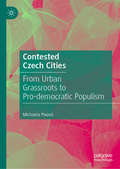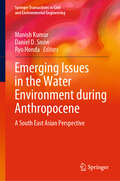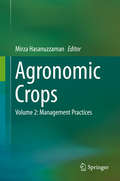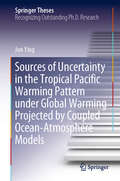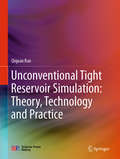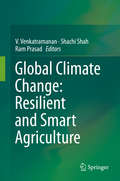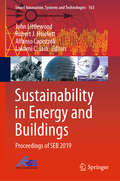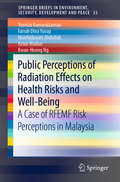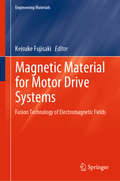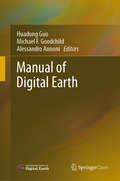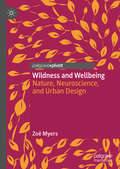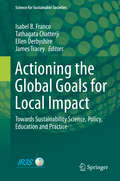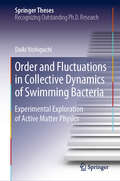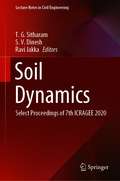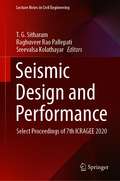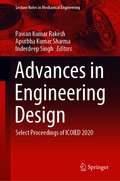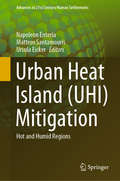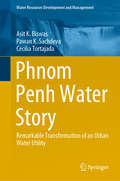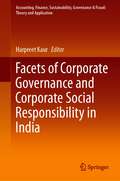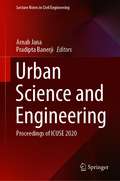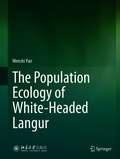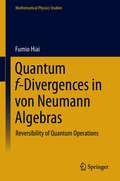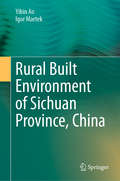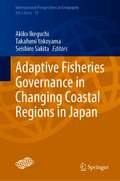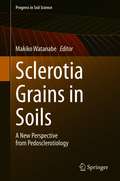- Table View
- List View
Contested Czech Cities: From Urban Grassroots to Pro-democratic Populism
by Michaela PixováThis book focuses on urban grassroots movements in post-socialist Czechia and their struggle against unprofessional and nondemocratic urban processes in their cities. It shows that in the context of neoliberal urban restructuring, weakly consolidated democracy, and corporate capture of the local state, urban activists often resort to entering electoral competition as the only efficient way of improving the situation in their cities. The book is based on four case studies from different Czech cities, narrating stories of activists struggling against a controversial flood protection project, the demolition of public buildings, an unhealthy land-use plan, arrogant development, and overpriced city halls. It offers valuable insight into the obstacles created by institutionalized forms of power abuse which urban activists must deal with and discusses the pro-democratic potential of urban grassroot movements’ efforts to overcome their limited ability to influence political processes via standard means of civic engagement and protest activities.
Emerging Issues in the Water Environment during Anthropocene: A South East Asian Perspective (Springer Transactions in Civil and Environmental Engineering)
by Manish Kumar Daniel D. Snow Ryo HondaThis book intends to bring together and integrate the subject matter of water quality. The book covers aspects of water related to climate change, emerging aspects of engineering sciences, bio-geochemical sciences, hydro geochemistry, river management and morphology, social sciences, and public policy. The book covers the role of disruptive innovations in water management, policy formation and impact mitigation strategies. The book includes lab results as well as case studies. It provides recommendations and solutions for policy making and sustainable water management. The chapters in this book deal cohesively with many aspects of the water environment during the Anthropocene era. The contents cover myriad issues, such as land degradation, water scarcity, urbanization, climate change, and disruptive innovation. The book also discusses issues highly pertinent to society and sustainability, such as the prevalence of enteric viruses and pharmaceutical residues as a possible anthropogenic markers in the aquatic environment. The book will prove useful for students, professionals, and researchers working on various aspects of water related concerns.
Agronomic Crops: Volume 2: Management Practices
by Mirza HasanuzzamanAgronomic crops have provided food, beverages, fodder, fuel, medicine and industrial raw materials since the beginning of human civilization. More recently, agronomic crops have been cultivated using scientific rather than traditional methods. However, in the current era of climate change, agronomic crops are suffering from different environmental stresses that result in substantial yield loss. To meet the food demands of the ever-increasing global population, new technologies and management practices are being adopted to boost yields and maintain productivity under both normal and adverse conditions. Further, in the context of sustainable agronomic crop production, scientists are adopting new approaches, such as varietal development, soil management, nutrient and water management, and pest management. Researchers have also made remarkable advances in developing stress tolerance in crops. However, the search for appropriate solutions for optimal production to meet the increasing food demand is still ongoing. Although there are several publications on the recent advances in these areas, there are few comprehensive resources available covering all of the recent topics. This timely book examines all aspects of production technologies, management practices and stress tolerance of agronomic crops.
Sources of Uncertainty in the Tropical Pacific Warming Pattern under Global Warming Projected by Coupled Ocean-Atmosphere Models (Springer Theses)
by Jun YingThis book discusses the sources of uncertainty in future model projections of the tropical Pacific SST warming pattern under global warming. It mainly focuses on cloud radiation feedback and ocean dynamical effect, which reveal to be the two greatest sources of uncertainty in the tropical Pacific SST warming pattern. Moreover, the book presents a correction for model projections of the tropical Pacific SST warming pattern based on the concept of “observational constraints”; the corrected projection exhibits a more El Niño-like warming pattern.
Unconventional Tight Reservoir Simulation: Theory, Technology and Practice
by Qiquan RanThis book systematically introduces readers to the simulation theory and techniques of multiple media for unconventional tight reservoirs. It summarizes the macro/microscopic heterogeneities; the features of multiscale multiple media; the characteristics of complex fluid properties; the occurrence state of continental tight oil and gas reservoirs in China; and the complex flow characteristics and coupled production mechanism under unconventional development patterns. It also discusses the simulation theory of multiple media for unconventional tight oil and gas reservoirs; mathematic model of flow through discontinuous multiple media; geological modeling of discrete multiscale multiple media; and the simulation of multiscale, multiphase flow regimes and multiple media. In addition to the practical application of simulation and software for unconventional tight oil and gas, it also explores the development trends and prospects of simulation technology. The book is of interest to scientific researchers and technicians engaged in the development of oil and gas reservoirs, and serves as a reference resource for advanced graduate students in fields related to petroleum.
Global Climate Change: Resilient and Smart Agriculture
by V. Venkatramanan Shachi Shah Ram PrasadThis book provides essential insights into methods and practices of ‘Climate-smart Agriculture,’ which is driven by the principles of climate resilience and smart resource use in agricultural production. Climate-smart agriculture is a key policy instrument for achieving poverty eradication and a hunger-free world, as well as mitigating the effects of climate change. This book discusses in detail climate-smart agricultural technologies and practices that can reduce the vulnerability of agricultural systems, improve the livelihoods of farmers and other stakeholders, and reduce the greenhouse gas emissions from crop production and livestock husbandry. The agriculture, forestry and other land use (AFOLU) sector produces roughly 10–12 gigatons of CO2-equivalent per year; therefore, sustainable practices for agriculture and related land use hold immense potential to mitigate climate change. The potential impacts of climate variability and climate change on agriculture are extensively documented and articulated, especially with regard to global and national environmental agendas that call for innovation, transformation and climate-resilient advances in agriculture. As the book demonstrates, climate-smart agriculture offers an excellent tool for boosting agricultural output to feed the growing global population; for reducing greenhouse gases emissions from agriculture and other land use; and for protecting agricultural production systems from the impending dangers of climate change.
Sustainability in Energy and Buildings: Proceedings of SEB 2019 (Smart Innovation, Systems and Technologies #163)
by John Littlewood Robert J. Howlett Alfonso Capozzoli Lakhmi C. JainThis volume contains the proceedings of the 11th KES International Conference on Sustainability and Energy in Buildings 2019 (SEB19) held in Budapest, 4th -5th July 2019 organised by KES International in partnership with Cardiff Metropolitan University, Wales, UK. SEB-19 invited contributions on a range of topics related to sustainable buildings and explored innovative themes regarding sustainable energy systems. The aim of the conference was to bring together researchers, and government and industry professionals to discuss the future of energy in buildings, neighbourhoods and cities from a theoretical, practical, implementation and simulation perspective. The conference formed an exciting chance to present, interact, and learn about the latest research and practical developments on the subject. The conference attracted submissions from around the world. Submissions for the Full-Paper Track were subjected to a blind peer-review process. Only the best of these were selected for presentation at the conference and publication in these proceedings. It is intended that this volume provides a useful and informative snapshot of recent research developments in the important and vibrant area of Sustainability in Energy and Buildings.
Public Perceptions of Radiation Effects on Health Risks and Well-Being: A Case of RFEMF Risk Perceptions in Malaysia (SpringerBriefs in Environment, Security, Development and Peace #33)
by Yusniza Kamarulzaman Farrah Dina Yusop Noorhidawati Abdullah Azian Madun Kwan-Hoong NgThis book reports on the investigation of the public’s perception of Radio Frequency Electromagnetic Field (RF-EMF) radiation effects on health and well-being, in Malaysia. It elaborates on how understanding the impact of perceived risk is essential in order to investigate the explanatory value and effectiveness of interventions influencing these beliefs. The book expands on the knowledge and understanding of different risk perception related to radiation in order to explain the gap in literature regarding the relationship between risk perceptions that lead to public behaviors. In doing so, the book presents empirical findings of a national study that unveils two key factors affecting public risk perceptions: psycho-graphic and personal factors. It offers a more collective and cultural understanding of public perceptions on radiation risks via a systematic mixed-method research approach. Research in the book also show that while the radiation risk is recognizable and unavoidable, the relevant stakeholders should be more proactive and committed to communicate and rectify the perception of radiation. The book thus serves as a valuable source of reference to understand the debate and to invite more participatory dialogues on radiation risk perceptions among public.
Magnetic Material for Motor Drive Systems: Fusion Technology of Electromagnetic Fields (Engineering Materials)
by Keisuke FujisakiThis book focuses on how to use magnetic material usefully for electrical motor drive system, especially electrical vehicles and power electronics. The contents have been selected in such a way that engineers in other fields might find some of the ideas difficult to grasp, but they can easily acquire a general or basic understanding of related concepts if they acquire even a rudimentary understanding of the selected contents.The cutting-edge technologies of magnetism are also explained. From the fundamental theory of magnetism to material, equipment, and applications, readers can understand the underlying concepts. Therefore, a new electric vehicle from the point of view of magnetic materials or a new magnetic material from the point of a view of electric vehicles can be envisioned: that is, magnetic material for motor drive systems based on fusion technology of an electromagnetic field. Magnetic material alone does not make up an electric vehicle, of course. Other components such as mechanical structure material, semiconductors, fuel cells, and electrically conductive material are important, and they are difficult to achieve. However, magnetic material involves one of the most important key technologies, and there are high expectations for its use in the future. It will be the future standard for motor-drive system researchers and of magneticmaterial researchers as well. This book is a first step in that direction.
Manual of Digital Earth
by Michael F. Goodchild Huadong Guo Alessandro AnnoniThis open access book offers a summary of the development of Digital Earth over the past twenty years. By reviewing the initial vision of Digital Earth, the evolution of that vision, the relevant key technologies, and the role of Digital Earth in helping people respond to global challenges, this publication reveals how and why Digital Earth is becoming vital for acquiring, processing, analysing and mining the rapidly growing volume of global data sets about the Earth. The main aspects of Digital Earth covered here include: Digital Earth platforms, remote sensing and navigation satellites, processing and visualizing geospatial information, geospatial information infrastructures, big data and cloud computing, transformation and zooming, artificial intelligence, Internet of Things, and social media. Moreover, the book covers in detail the multi-layered/multi-faceted roles of Digital Earth in response to sustainable development goals, climate changes, and mitigating disasters, the applications of Digital Earth (such as digital city and digital heritage), the citizen science in support of Digital Earth, the economic value of Digital Earth, and so on. This book also reviews the regional and national development of Digital Earth around the world, and discusses the role and effect of education and ethics. Lastly, it concludes with a summary of the challenges and forecasts the future trends of Digital Earth. By sharing case studies and a broad range of general and scientific insights into the science and technology of Digital Earth, this book offers an essential introduction for an ever-growing international audience.
Wildness and Wellbeing: Nature, Neuroscience, and Urban Design
by Zoë MyersWildness and Wellbeing explores the dynamic relationships between urban nature and mental health, offering practical strategies for urban design. Mental health is a leading global issue and our urban environments can contribute to conditions such as depression and anxiety. Presenting the latest research, this book explores how neuroscience can offer new perspectives on the crucial role everyday multisensory interactions with nature can have on our mental wellbeing. These insights can help us (un)design our streets, neighbourhoods and cities, allowing nature to be integrated back into our cities. Wildness and Wellbeing is for anyone interested in the connections between urban ecology, health, environmental science, planning, and urban design, helping to create biodiverse cities for mental health.
Actioning the Global Goals for Local Impact: Towards Sustainability Science, Policy, Education and Practice (Science for Sustainable Societies)
by Isabel B. Franco Tathagata Chatterji Ellen Derbyshire James TraceyThis book highlights the value of sustainability science in newly emerging and innovative approaches to research, education, capacity building and practice in order to transform rhetoric into impact sustainability. Presenting case studies from various industries, sectors and geographical contexts targeting the seventeen (Sustainable development Goals (SDGs) outlined in the 2030 Agenda, it provides insightful recommendations to create sustainable impact while at the same time achieving the global goals. The book addresses the fundamental question of how sustainability rehtoric can be transformed into impact sustainability research, education and capacity building and as a result, how existing approaches in science, curricula and practice are mitigating the demands emerging from addressing global sustainable development in an impactful and innovative manner. Providing recommendations for impact sustainability in science, curriculum on how to address pressing sustainability issues and contribute toward achieving the SDGs, this book is an essential reference for both academics and professionals.
Order and Fluctuations in Collective Dynamics of Swimming Bacteria: Experimental Exploration of Active Matter Physics (Springer Theses)
by Daiki NishiguchiThis thesis focuses on experimental studies on collective motion using swimming bacteria as model active-matter systems. It offers comprehensive reviews of state-of-the-art theories and experiments on collective motion from the viewpoint of nonequilibrium statistical physics. The author presents his experimental studies on two major classes of collective motion that had been well studied theoretically. Firstly, swimming filamentous bacteria in a thin fluid layer are shown to exhibit true, long-range orientational order and anomalously strong giant density fluctuations, which are considered universal and landmark signatures of collective motion by many numerical and theoretical works but have never been observed in real systems. Secondly, chaotic bacterial turbulence in a three-dimensional dense suspension without any long-range order as described in the first half is demonstrated to be capable of achieving antiferromagnetic vortex order by imposing a small number of constraints with appropriate periodicity. The experimental results presented significantly advance our fundamental understanding of order and fluctuations in collective motion of motile elements and their future applications.
Soil Dynamics: Select Proceedings of 7th ICRAGEE 2020 (Lecture Notes in Civil Engineering #119)
by T. G. Sitharam S. V. Dinesh Ravi JakkaThis volume presents select papers presented at the 7th International Conference on Recent Advances in Geotechnical Earthquake Engineering and Soil Dynamics. The papers discuss advances in the fields of soil dynamics and geotechnical earthquake engineering. A strong emphasis is placed on connecting academic research and field practice, with many examples, case studies, best practices, and discussions on performance based design. This volume will be of interest to researchers and practicing engineers alike.
Seismic Design and Performance: Select Proceedings of 7th ICRAGEE 2020 (Lecture Notes in Civil Engineering #120)
by T. G. Sitharam Raghuveer Rao Pallepati Sreevalsa KolathayarThis volume presents select papers presented at the 7th International Conference on Recent Advances in Geotechnical Earthquake Engineering and Soil Dynamics. The papers discuss advances in the fields of soil dynamics and geotechnical earthquake engineering. Some of the themes include seismic design of deep & shallow foundations, soil structure interaction under dynamic loading, marine structures, etc. A strong emphasis is placed on connecting academic research and field practice, with many examples, case studies, best practices, and discussions on performance based design. This volume will be of interest to researchers and practicing engineers alike.
Advances in Engineering Design: Select Proceedings of ICOIED 2020 (Lecture Notes in Mechanical Engineering)
by Pawan Kumar Rakesh Apurbba Kumar Sharma Inderdeep SinghThis book presents the selected peer-reviewed proceedings of the International Conference on Innovative Engineering Design (ICOIED 2020). The contents provide a multidisciplinary approach for the development of innovative product design and their benefits for the society. The book presents latest advances in various fields like design process, service development, micro/nano technology, sensors and MEMS, and sustainability in engineering design. This book can be useful for students, researchers, and professionals interested in innovative product/process design and development.
Urban Heat Island: Hot and Humid Regions (Advances in 21st Century Human Settlements)
by Napoleon Enteria Matteos Santamouris Ursula EickerThis book discusses the concepts and technologies associated with the mitigation of urban heat islands (UHIs) that are applicable in hot and humid regions. It presents several city case studies on how UHIs can be reduced in various areas to provide readers, researchers, and policymakers with insights into the concepts and technologies that should be considered when planning and constructing urban centres and buildings. The rapid development of urban areas in hot and humid regions has led to an increase in urban temperatures, a decrease in ventilation in buildings, and a transformation of the once green outdoor environment into areas full of solar-energy-absorbing concrete and asphalt. This situation has increased the discomfort of people living in these areas regardless of whether they occupy concrete structures. This is because indoor and outdoor air quality have both suffered from urbanisation. The development of urban areas has also increased energy consumption so that the occupants of buildings can enjoy indoor thermal comfort and air quality that they need via air conditioning systems. This book offers solutions to the recent increase in the number of heat islands in hot and humid regions.
Phnom Penh Water Story: Remarkable Transformation of an Urban Water Utility (Water Resources Development and Management)
by Asit K. Biswas Pawan K. Sachdeva Cecilia TortajadaThis book analyses how a water utility from a developing country, Phnom Penh Water Supply Authority, that was totally dysfunctional, corruption-ridden and literally bankrupt in 1993, became one of the most successful water utilities of the developing world in only about 15 years. By 2010, some of the performance indicators of this public sector utility were even better than London, Paris or Los Angeles. The book further analyses the enabling conditions that made this remarkable transformation possible. Based on this analysis, a framework is recommended for water utilities from developing countries so that they can also be transformed into functional, efficient, equitable and financially viable institutions on a sustainable basis.
Facets of Corporate Governance and Corporate Social Responsibility in India (Accounting, Finance, Sustainability, Governance & Fraud: Theory and Application)
by Harpreet KaurThis book focuses on the legal and social aspects of corporate governance through doctrinal and empirical research papers presented at the 9th International Conference on Governance Fraud Ethics and Social Responsibility held at National Law University Delhi in 2018. The papers encompass the internal and external factors that affect the interests of a company’s stakeholders, including shareholders, customers, suppliers, government regulators and management, and several other important players. The book provides better clarity on the concept of corporate governance and how it is intertwined with factors such as sustainability, social responsibility and the role of government, taxation and audit, and shareholder engagement.
Urban Science and Engineering: Proceedings of ICUSE 2020 (Lecture Notes in Civil Engineering #121)
by Arnab Jana Pradipta BanerjiThis book comprises select proceedings of the First International Conference on Urban Science and Engineering. The focus of the conference was on the milieu of urban planning while applying technology which ensures better urban life, coupled with sensitivity to depleting natural resources and focus on sustainable development. The contents focus on sustainable infrastructure, mobility and planning, urban water and sanitization, green construction materials, optimization and innovation in structural design, and more. This book aims to provide up-to-date and authoritative knowledge from both industrial and academic worlds, sharing best practice in the field of urban science and engineering. This book is beneficial to students, researchers, and professionals working in the field of smart materials and sustainable development.^
The Population Ecology of White-Headed Langur
by Wenshi PanThis book offers a rare and detailed insight into 20 years’ of in-depth field research and conservation of the white-headed langur. It focuses on the white-headed langur’s natural refuge, territory and home range, diets and foraging strategies, behavior modes, reproductive strategies, population, possible future viabilities, and their interaction with human society. From 1996 through 2016, a small research team led by Prof.Wenshi Pan from Peking University conducted studies and conservation efforts on the white-headed langur, one of the most endangered endemic species of China, in Guangxi and saved the species from extinction. With the help of conservationists’ efforts, the white-headed langur population in Nongguan Mountains, Guangxi, gradually increased from 105 to approximately 820.This book shares the success story of the unification of human development and wildlife conservation.
Quantum f-Divergences in von Neumann Algebras: Reversibility of Quantum Operations (Mathematical Physics Studies)
by Fumio HiaiRelative entropy has played a significant role in various fields of mathematics and physics as the quantum version of the Kullback–Leibler divergence in classical theory. Many variations of relative entropy have been introduced so far with applications to quantum information and related subjects. Typical examples are three different classes, called the standard, the maximal, and the measured f-divergences, all of which are defined in terms of (operator) convex functions f on (0,∞) and have respective mathematical and information theoretical backgrounds. The α-Rényi relative entropy and its new version called the sandwiched α-Rényi relative entropy have also been useful in recent developments of quantum information.In the first half of this monograph, the different types of quantum f-divergences and the Rényi-type divergences mentioned above in the general von Neumann algebra setting are presented for study. While quantum information has been developing mostly in the finite-dimensional setting, it is widely believed that von Neumann algebras provide the most suitable framework in studying quantum information and related subjects. Thus, the advance of quantum divergences in von Neumann algebras will be beneficial for further development of quantum information. Quantum divergences are functions of two states (or more generally, two positive linear functionals) on a quantum system and measure the difference between the two states. They are often utilized to address such problems as state discrimination, error correction, and reversibility of quantum operations. In the second half of the monograph, the reversibility/sufficiency theory for quantum operations (quantum channels) between von Neumann algebras via quantum f-divergences is explained, thus extending and strengthening Petz' previous work.For the convenience of the reader, an appendix including concise accounts of von Neumann algebras is provided.
Rural Built Environment of Sichuan Province, China
by Yibin Ao Igor MartekMajor changes are taking place in the Chinese countryside as China rushes to modernizes and urbanizes its rural fabric. The transformation is improving the quality of life of rural inhabitants, but also brings about challenges as people strive to adjust. This book systematically examines the impact of change on the daily lives and activities of the residents of Sichuan Province, in China’s South-west. It examines the themes of infrastructure, transport modes and preferences, sanitation, water conservation, earthquake and flood disaster preparedness, and the impact these have on villager behavior and quality of life. This book is an essential reference guide for graduate students and practitioners in the fields of rural planning, renewal, and construction.
Adaptive Fisheries Governance in Changing Coastal Regions in Japan (International Perspectives in Geography #13)
by Akiko Ikeguchi Takafumi Yokoyama Seishiro SakitaJapan’s fisheries sector is undergoing a major restructuring. The coastal ecological change and natural disasters such as tsunami demand that communities transform or organize resource governance anew. Under the national policy of decentralization to cope with the aging and declining population, the availability of local infrastructure, both physical and social, plays a significant role in the adaptive capacity of the community. This book presents the historical and spatial dynamics of coastal fisheries resource governance in response to different environmental changes, its socio-political context, and challenges raised by academicians. The reader will find the national trends and geographical patterns of the administrative restructuring in the communities and fisheries cooperatives from abundant maps and figures, as well as a rich description of adaptive governance in the scale of region and community by ecological-historical approaches. Comparative analysis of the communities provides a practical framework to understand a variety of local resources in Japan’s coastal regions, which will serve as a guide to the development of alternative adaptive governance in community-based small-scale fisheries in the world.
Sclerotia Grains in Soils: A New Perspective from Pedosclerotiology (Progress in Soil Science)
by Makiko WatanabeThis book introduces what sclerotia grains are, and where and how they exist in soils, by compiling the results obtained from the studies on fungal sclerotia formed by Cenococcum geophilum (Cg) and related species, the visible black small grains persistent for a few thousand to ten thousands of years in forest soils and sediments. The chapters contain the results and discussions on the ecological distribution and regulating factors, characteristics, and function of Cg sclerotia grains, carried out by researchers from soil geography, soil science, soil microbiology, physiology, forestry, analytical chemistry, environmental chemistry, material science, and related disciplines. The anatomy of sclerotia grains in soil was realized in terms of interdisciplinary joint researches, which resulted in deepening understanding of the ecological function of the mesoscale organic component in soils. This book covers the natural history of sclerotia in soils, pedo-sclerotiology.
